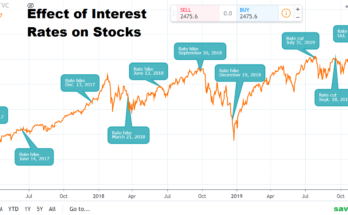The basics of stock market investing are where shares of companies are bought and sold. Companies sell shares to raise money, and in return, shareholders own a part of the company. This helps companies grow, and investors can make money if the company does well.
The basics of stock market investing began in the 17th century with the Amsterdam Stock Exchange. Over time, they’ve become complex and important for economies worldwide. They provide a way for companies to get funding and for people to invest their money. Today, stock markets are crucial for how businesses operate and grow globally.
Basics of stock market investing
Key Concepts and Terminologies
Understanding the basics of stock market investing involves grasping several essential concepts and terms that are crucial for investors and anyone interested in financial markets:
- Stocks, Shares, and Equities: These terms all consult with possession gadgets in an agency. When you buy stocks or stocks, you personal a portion of that employer. This ownership entitles you to ability profits through dividends and capital gains (will increase the stock’s charge).
- Bull and Bear Markets: These terms describe the general trend of the stock marketplace. A bull marketplace signifies a length while inventory fees are typically rising, frequently pushed through optimism and sturdy investor self-belief. On the other hand, an enduring marketplace suggests a period of falling stock costs, commonly because of significant pessimism and economic downturns.
- Market Capitalization: This is the overall value of an organization’s outstanding shares of inventory. It’s calculated by multiplying the current inventory charge by using the total range of first-rate shares. Market capitalization enables deciding the scale of a business enterprise and is used to categorize agencies as big-cap, mid-cap, or small-cap.
- Dividends and Yield: Dividends are bills made with the aid of a corporation to its shareholders from its earnings. They are typically dispensed quarterly and are a manner for companies to percentage their monetary success with investors. Yield, expressed as a percentage, represents the dividend income relative to the stock’s charge.
How the Stock Market Works
The stock market is where people buy and sell shares of companies. It works through exchanges like the New York Stock Exchange (NYSE) and NASDAQ. These exchanges are places where buyers and sellers come together to trade stocks.
Brokers help investors trade stocks by acting as middlemen. They take orders from investors and execute them on the stock market. Brokers charge a fee for their services, known as a commission. Investors can trade stocks using online trading platforms provided by brokers, making it convenient to buy and sell shares from anywhere.
Stock indices like the S&P 500 and Dow Jones Industrial Average track how well the stock market is doing overall or in specific sectors. They do this by monitoring the prices of selected stocks. If the index goes up, it means the prices of the stocks it tracks have generally risen. If it goes down, the prices have generally fallen.
Investors purchase stocks with the expectation that their value will improve over time. When a company does well, its stock price often goes up, allowing investors to sell their shares for a profit. However, stock prices can also go down, causing investors to lose money.
Overall, the stock market provides a way for companies to raise money by selling shares and for investors to potentially profit by buying those shares. It’s a vital part of the economy and can be influenced by many factors, including company performance, economic conditions, and investor sentiment.
Types of Stocks
Stocks, or shares of ownership in a company, come in various types that cater to different investor preferences and goals.
1. Common vs. Preferred Stocks:
- Common stocks give shareholders voting rights in company decisions and potential dividends that vary based on the company’s profitability and board decisions.
- Preferred stocks typically do not provide voting rights but offer fixed dividends, which means shareholders receive a predictable income stream. They are often seen as a hybrid between stocks & bonds.
2. Growth vs. Value Stocks:
- Growth stocks belong to companies expected to expand at a faster pace than the overall market. Investors buy these stocks in anticipation of substantial capital appreciation rather than regular dividends.
- Value stocks, on the other hand, are thought to be priced lower than their intrinsic value, making them potentially undervalued. Investors in value stocks expect the market to correct this undervaluation, leading to price appreciation.
3. Large-Cap, Mid-Cap, and Small-Cap Stocks:
- Large-cap stocks are shares of large corporations with a market capitalization typically exceeding $10 billion. They tend to be stable and established companies.
- Mid-cap stocks belong to companies with a market capitalization between $2 billion and $10 billion. They offer a balance between growth potential & stability.
- Small-cap stocks are issued by companies with a market capitalization generally below $2 billion. These stocks can be more volatile but offer higher growth potential.
4. Blue-Chip Stocks:
- Blue-chip stocks represent shares in well-established companies with a strong financial standing and a history of reliable performance. These companies are leaders in their industries and are known for their stability, which often makes their stocks less volatile compared to others.
Understanding these different types of basics of stock market investing diversifies their portfolios based on risk tolerance, investment horizon, and financial objectives. Each category offers unique characteristics that appeal to different investment strategies, whether seeking growth, income, stability, or a combination thereof.
Investment Strategies
Investment strategies in the stock market vary widely, catering to different goals and risk tolerances of investors:
Long-Term vs. Short-Term Investing: Long-term investing means holding stocks for many years, aiming to benefit from overall market growth and company performance. Short-term investing involves buying and selling stocks over shorter periods, often capitalizing on price fluctuations.
Fundamental Analysis: This strategy assesses a company’s health by examining its financial statements, management quality, competitive advantages, and industry trends. Investors using fundamental analysis seek to determine if a stock is undervalued or overvalued based on its intrinsic value.
Technical Analysis: Technical analysis relies on studying past market data, particularly price movements and trading volumes, to forecast future price trends. It focuses less on a company’s fundamentals and more on patterns and trends in stock price charts.
Dollar-Cost Averaging: This method involves regularly investing a fixed amount of money regardless of the stock’s price at the time. By buying more shares when prices are low and fewer when prices are high, investors aim to reduce the impact of market volatility on their overall investment.
Diversification: Diversification spreads investment across various assets, sectors, and geographical regions to minimize risk. If one investment performs poorly, others may offset losses, thereby potentially stabilizing overall returns.
Each strategy has its advantages and considerations:
- Long-term investing suits those looking for stable growth and willing to ride out market fluctuations.
- Fundamental analysis requires a deep understanding of financial data and economic trends.
- Technical analysis demands proficiency in interpreting market charts and patterns.
- Dollar-cost averaging offers a disciplined investment approach but may not capitalize on market timing.
- Diversification helps mitigate risk but requires careful asset allocation and monitoring.
Investors often combine these strategies based on their financial goals, time horizon, and risk tolerance. Understanding these approaches empowers investors to make informed decisions aligned with their financial objectives.
Building a Stock Portfolio
Building a stock portfolio means putting together a collection of different stocks to help grow your money over time. Here are the steps to do it:
First, you must define your investment objectives. This means deciding what you want to achieve, like saving for retirement or buying a house.
Next, you should think about how much risk you’re comfortable with. Some stocks can go up and down a lot, while others are more stable. Understanding your tolerance for risk helps you choose the right mix of stocks.
Asset allocation is about spreading your money across different types of investments, like stocks, bonds, and maybe other assets. This helps balance risk and potential rewards.
When it comes to picking stocks, you’ll want to do some research. Look at a company’s financial health, its products, and how it compares to its competitors. This helps you make smart choices about where to invest your money.
Once you’ve built your portfolio, it’s important to keep an eye on it. Markets change, so you should regularly check how your investments are doing. Sometimes, you might need to adjust your portfolio to keep it in line with your goals.
By following the steps of setting goals, understanding risk, diversifying, picking stocks wisely, and monitoring your portfolio-you can build a stock portfolio that’s right for you. It’s about making informed decisions and staying focused on what you want to achieve with your investments.
Understanding Risks and Rewards
Investing in the stock market involves both risks and rewards. It’s important to understand these factors before deciding to invest your money.
Risks of Investing:
- Market Risks: The stock market can be affected by economic downturns, which happen when the economy slows down and companies make less money. Political instability, like elections or conflicts between countries, can also cause the stock market to go up and down. Natural disasters, such as earthquakes or hurricanes, can damage businesses and their profits, affecting stock prices.
- Company-Specific Risks: Every company faces risks that can affect its stock price. Poor decisions made by company leaders, like bad investments or high costs, can hurt a company’s profits and its stock price. If a company’s products fail to sell well or if competitors offer better products or prices, its stock price can drop.
- Economic and Political Risks: Changes in government policies, like new laws about taxes or regulations, can impact how much money companies make and how much their stock is worth. If tax laws change to make it harder for companies to make profits, for example, their stock prices might fall.
Rewards of Investing:
Despite these risks, investing in stocks can offer significant rewards. Over the long term, historically, the stock market has tended to give higher returns compared to other ways of investing money, like putting it in savings accounts or buying bonds.
Tools and Resources for Investors
Investors have a range of tools and resources available to help them make informed decisions and manage their investments effectively.
Online Trading Platforms: These are websites or applications where investors can buy and sell stocks. They offer tools like charts, research reports, and real-time quotes to analyze stock prices and trends. Examples include Robinhood, E*TRADE, and TD Ameritrade.
Stock Market News and Analysis Websites: Websites such as Yahoo Finance, Bloomberg, and MarketWatch provide up-to-date news, market trends, and expert analysis. Investors use these platforms to stay informed about economic events, company earnings reports, and other factors affecting stock prices.
Financial Advisors and Investment Clubs: Professional financial advisors offer personalized investment advice based on individual goals and risk tolerance. Investment clubs are groups of investors who pool their knowledge and resources to analyze investments collectively. Both provide valuable insights and support for making investment decisions.
Books, Courses, and Seminars: These educational resources offer deeper insights into investing strategies, market analysis techniques, and financial planning. Books by renowned investors like Warren Buffett or Benjamin Graham provide timeless wisdom, while courses and seminars offer structured learning opportunities on specific topics such as stock valuation or portfolio management.
Each of these resources plays a crucial role in the investment journey. Online trading platforms facilitate direct participation in the stock market with tools for analysis and trading. News and analysis websites keep investors informed about market developments. Financial advisors and investment clubs offer personalized advice and community support. Books, courses, and seminars deepen understanding and provide the knowledge needed to navigate the complexities of investing.
Common Mistakes to Avoid
New investors can often stumble into pitfalls that affect their investment success. One common mistake is emotional trading, where decisions are driven by feelings rather than careful analysis. When emotions guide investments, it can lead to buying high in excitement or selling low in fear, which can harm long-term gains.
Another mistake is a lack of research. Investing without understanding a company’s fundamentals or the market conditions can be risky. It’s important to know what a company does, how it makes money, and its potential for growth or decline.
Ignoring market trends is also problematic. Markets are influenced by broader economic factors and trends. Failing to consider these can result in investments that don’t align with current conditions, leading to missed opportunities or losses.
Overtrading is another pitfall. This occurs when investors buy and sell stocks frequently, often driven by a desire to make quick profits. However, frequent trading can rack up transaction costs and taxes, eating into overall returns.
To avoid these mistakes, new investors should focus on a few key strategies. First, they should develop a sound investment plan based on their financial goals and risk tolerance. Second, they should conduct thorough research before investing in any stock or asset.
Conclusion and Final Tips
The basics of stock market investing can be profitable, but it’s important to be well-informed, patient, and disciplined. Here are some key items to remember:
Firstly, grasp the basics and learn key terms like stocks, bonds, and mutual funds. Understanding these will help you navigate the market better.
Next, have a clear investment plan. This means deciding how much to invest, for how long, and your risk tolerance. A plan keeps you focused and less likely to make impulsive decisions.
Diversifying your investments is crucial. Don’t put all your money into one stock; spread it across different industries and asset types. This way, if one investment performs poorly, others may balance it out.
Stay updated with market trends and news. Markets can change rapidly, so being informed helps you make timely decisions. Continuous learning about financial markets and economic indicators enhances your ability to spot opportunities and risks.
Lastly, avoid common mistakes. Emotional decisions, like panic selling during market dips, can lead to losses. Rational thinking based on research and your investment strategy is key.
Starting with a strong understanding of these principles sets a solid foundation for your investing journey. Remember, success in the stock market comes from knowledge, patience, and making informed choices. By applying these tips, you’ll be better equipped to grow your wealth over time.




